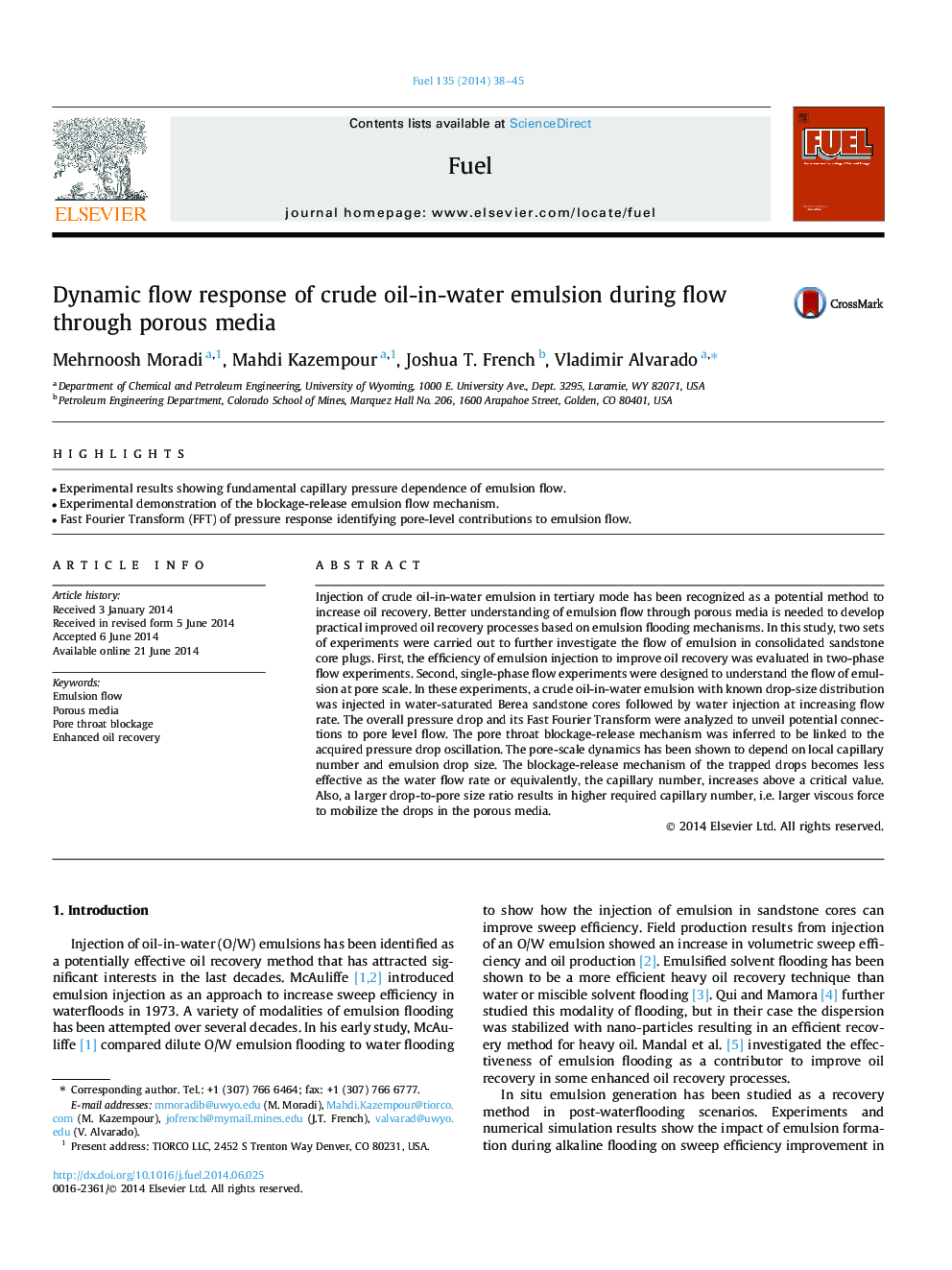| Article ID | Journal | Published Year | Pages | File Type |
|---|---|---|---|---|
| 6636680 | Fuel | 2014 | 8 Pages |
Abstract
Injection of crude oil-in-water emulsion in tertiary mode has been recognized as a potential method to increase oil recovery. Better understanding of emulsion flow through porous media is needed to develop practical improved oil recovery processes based on emulsion flooding mechanisms. In this study, two sets of experiments were carried out to further investigate the flow of emulsion in consolidated sandstone core plugs. First, the efficiency of emulsion injection to improve oil recovery was evaluated in two-phase flow experiments. Second, single-phase flow experiments were designed to understand the flow of emulsion at pore scale. In these experiments, a crude oil-in-water emulsion with known drop-size distribution was injected in water-saturated Berea sandstone cores followed by water injection at increasing flow rate. The overall pressure drop and its Fast Fourier Transform were analyzed to unveil potential connections to pore level flow. The pore throat blockage-release mechanism was inferred to be linked to the acquired pressure drop oscillation. The pore-scale dynamics has been shown to depend on local capillary number and emulsion drop size. The blockage-release mechanism of the trapped drops becomes less effective as the water flow rate or equivalently, the capillary number, increases above a critical value. Also, a larger drop-to-pore size ratio results in higher required capillary number, i.e. larger viscous force to mobilize the drops in the porous media.
Keywords
Related Topics
Physical Sciences and Engineering
Chemical Engineering
Chemical Engineering (General)
Authors
Mehrnoosh Moradi, Mahdi Kazempour, Joshua T. French, Vladimir Alvarado,
